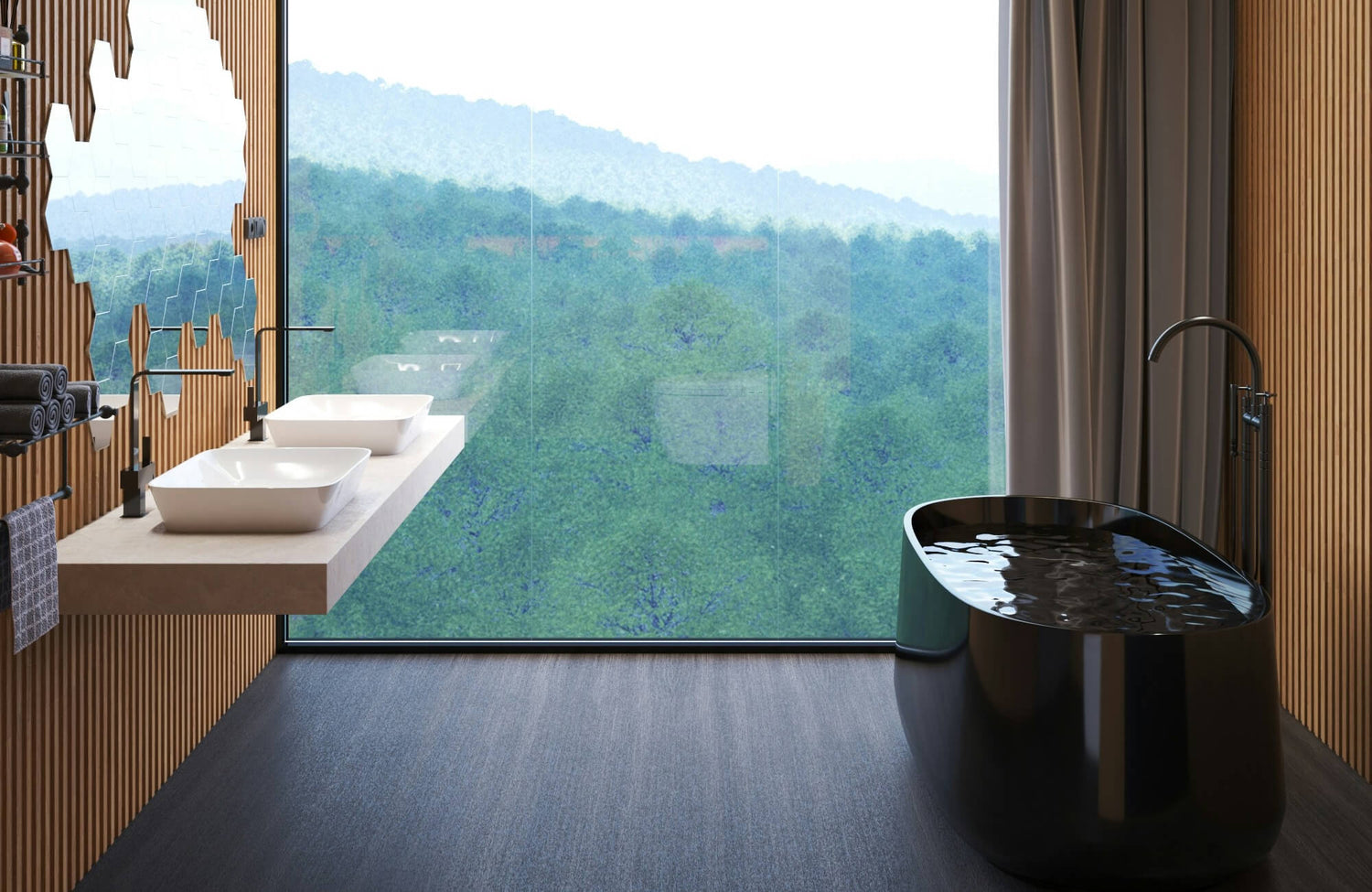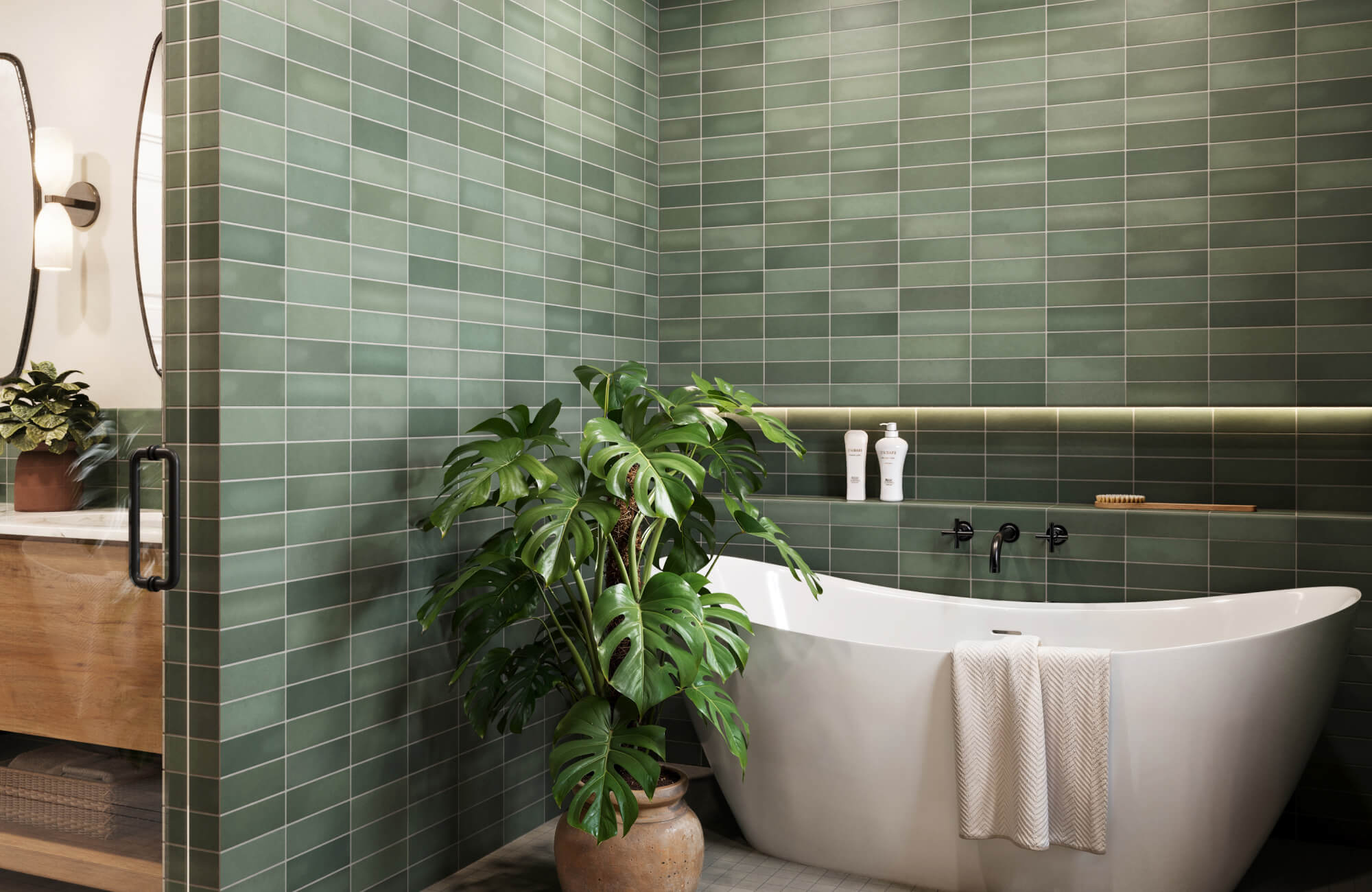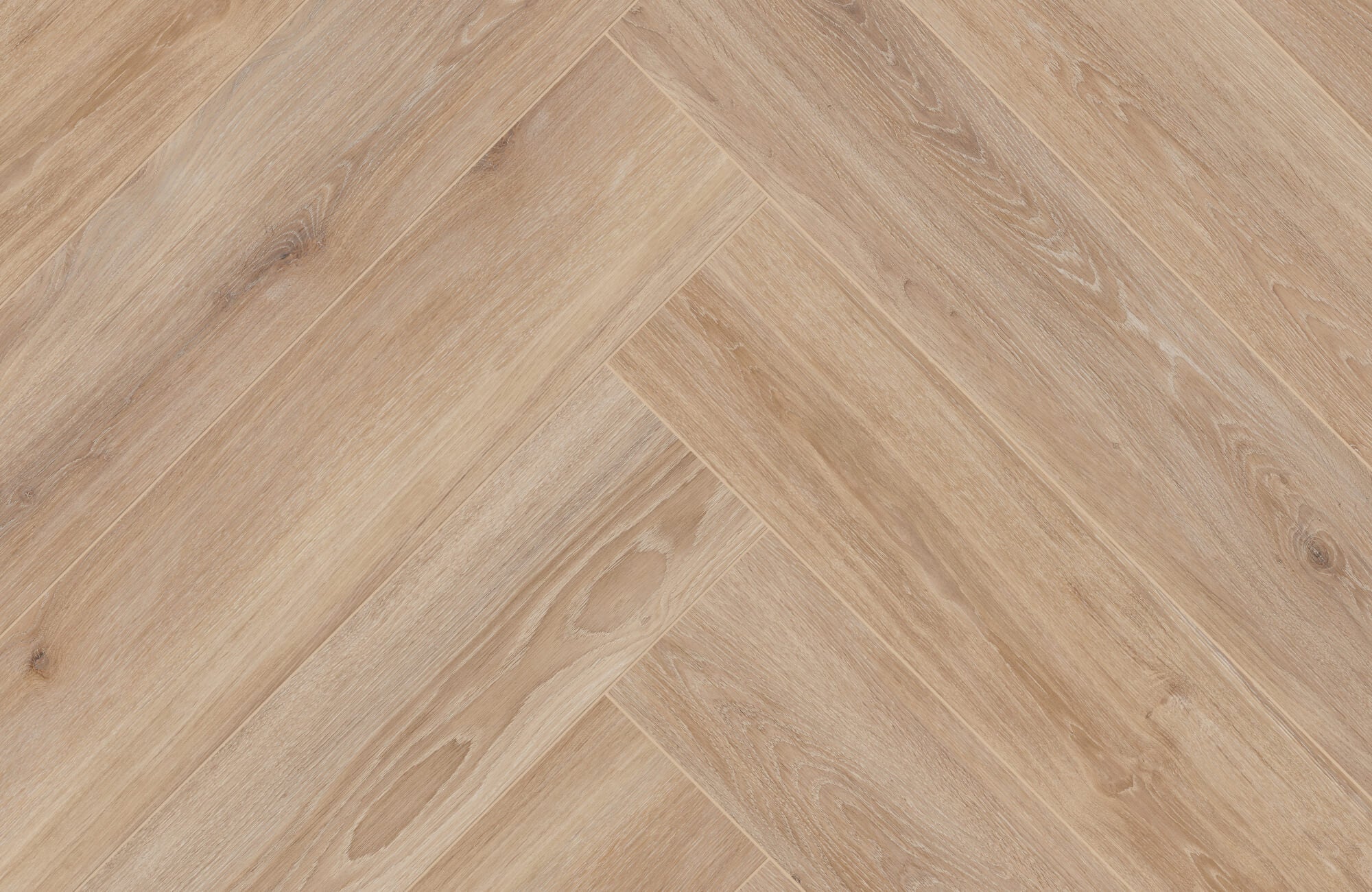Wood flooring, with its timeless elegance and warm aesthetic, has long been a coveted choice for homes. Its natural beauty and versatility have made it a staple in living rooms, bedrooms, and even kitchens. But what about the bathroom? Can this classic material withstand the unique challenges of a humid, water-prone environment?
While the idea of wood flooring in a bathroom might seem unconventional, it’s a trend that’s gaining momentum. This article explores the aesthetic appeal, practical challenges, and innovative solutions for using wood flooring in bathrooms. We’ll also highlight alternative materials that replicate wood's beauty while addressing its limitations. Whether you're drawn to the rustic charm of reclaimed wood or the sleek modernity of wood look porcelain tiles, this guide will equip you with the knowledge to make an informed decision.

The Aesthetic Appeal of Wood Flooring in Bathrooms
Wood flooring introduces a unique coziness to bathroom spaces. Unlike the cold, hard surfaces of traditional tile or stone, wood offers a soft, inviting feel underfoot. This tactile quality complements the serenity of a well-designed bathroom, fostering relaxation and tranquility.
Visual Texture and Color Options
Light-toned woods like maple or ash can make small bathrooms feel airy and spacious, while darker species, such as walnut or mahogany bring richness and depth to larger spaces. Their grain patterns and knots also create a unique and captivating aesthetic.
Finishes play a pivotal role in defining the flooring’s character as well. For instance, a matte finish delivers a natural, understated look, ideal for rustic or minimalist designs. Polished finishes, on the other hand, lend a glossy, luxurious feel that works well in contemporary settings. Additionally, for vintage-inspired bathrooms, distressed or weathered finishes introduce charm and a sense of character.
Versatility in Design
The wide range of visual textures and colors that wood flooring offers allows for endless design possibilities. In modern bathrooms, it can add a touch of warmth and character, contrasting with sleek lines and minimalist fixtures. In vintage or rustic-inspired spaces, wood flooring can create a timeless and nostalgic atmosphere, especially when paired with antique-style faucets and distressed finishes. Scandinavian design, which emphasizes simplicity and functionality, can also be enhanced by the natural beauty of wood, creating a serene and minimalist aesthetic. For a cohesive look, choose fixtures and accessories that complement the wood's natural color and grain—brass or bronze accents can add warmth and sophistication, while chrome or nickel can create a more contemporary feel.

Challenges of Using Wood Flooring in Bathrooms
While wood flooring is visually stunning, its application in bathrooms requires overcoming specific challenges.
Moisture and Humidity Concerns
One of the primary challenges of using wood flooring in bathrooms is the constant exposure to moisture and humidity. Wood is a hygroscopic material, meaning it absorbs and releases moisture from the surrounding air. The high humidity levels in bathrooms can lead to a range of issues, including warping, cupping, and swelling. If not properly sealed and maintained, wood flooring can deteriorate over time, requiring costly repairs or replacement.
Maintenance and Care
Because of moisture and humidity concerns, wood flooring in bathrooms demands a higher level of maintenance and care compared to other materials. Regular cleaning is necessary to prevent the buildup of dirt, grime, and soap scum, which can deteriorate the finish and lead to water damage. Spills should also be cleaned up immediately to minimize the risk of water penetration. Additionally, periodic sealing is essential to protect the wood from moisture and preserve its appearance. This involves stripping the old finish, sanding the surface, and applying several coats of polyurethane or other suitable sealant. While effective, this maintenance can be time-intensive and costly, requiring both attention to detail and financial investment to maintain the flooring's durability and aesthetic appeal over time.
Cost Considerations
Wood flooring is often more expensive than other alternative materials, such as wood look porcelain tile or luxury vinyl tile (LVT). High-quality hardwood typically ranges from $8 to $15 per square foot, with exotic woods or specialty finishes reaching up to $25 per square foot. The ongoing maintenance costs, including regular cleaning, sealing, and potential refinishing, can further add $3 to $8 per square foot to the total cost.
In comparison, alternatives like wood look porcelain tiles or luxury vinyl tile (LVT) mimic the appearance of wood without its susceptibility to water damage. Wood look porcelain tiles typically range from $3 to $10 per square foot, and LVT costs between $2 and $7. These materials are more affordable and easier to maintain, making them practical and budget-friendly options for those who want the appearance of wood without its associated challenges and expenses.

Practical Solutions for Using Wood Flooring
While incorporating wood flooring into your bathroom can elevate the space's aesthetic appeal, it’s important to address the practical concerns of using wood in a moisture-prone environment. Here are some solutions to ensure the longevity and beauty of your wood floor:
Engineered Wood Options
One of the most effective ways to mitigate the challenges of using wood flooring in bathrooms is to opt for engineered wood. This type of flooring consists of multiple layers of wood, with the top layer being a thin veneer of real wood. The underlying layers, often made of plywood or other engineered wood products, provide added stability and moisture resistance. Engineered wood is less susceptible to warping, cupping, and other forms of water damage, making it a more suitable choice for bathroom environments.
When selecting engineered wood for a bathroom, it's important to choose products specifically designed for high-moisture areas. These products typically have a thicker wear layer and a more durable finish, which can better withstand the rigors of a bathroom. Popular engineered wood brands often offer a range of bathroom-friendly products, including waterproof finishes and treatments.
Waterproof Finishes and Treatments
Applying waterproof finishes and treatments is crucial to protect wood flooring in moisture-rich environments like bathrooms. These products create a protective barrier that repels water and reduces the risk of damage. When selecting a finish, consider factors such as durability, appearance, and ease of maintenance. Polyurethane is a popular choice for its durability and water resistance. However, it can be prone to yellowing over time, especially in areas with significant sunlight exposure. For a more natural look, consider using water-based polyurethane or acrylic finishes.
To determine the most appropriate finish for your bathroom, consulting with a flooring professional is recommended. They can evaluate moisture levels and suggest products tailored to your specific needs. Additionally, routine maintenance such as sweeping, mopping with a damp cloth (not soaking wet), and periodic refinishing further extend the lifespan of your wood floor.
Strategic Installation Techniques
Proper installation is another key factor in ensuring the longevity of wood flooring in bathrooms. One effective technique is to raise the subfloor to create a slight slope towards the drain. This helps to divert water away from the flooring and prevent pooling. Also, installing a vapor barrier beneath the subfloor can help to reduce moisture levels.
Adequate ventilation is also important for maintaining a healthy indoor environment. Ensure that your bathroom has proper ventilation, such as an exhaust fan, to remove excess moisture and prevent mold and mildew growth. These measures, combined with high-quality material selection and regular maintenance, enable you to enjoy the beauty and warmth of wood flooring in your bathroom for years to come.

Alternatives to Hardwood Flooring for Bathrooms
If you're concerned about water damage or prefer a more budget-friendly and practical option, consider these alternative flooring materials:
Wood Look Porcelain Tiles
Wood look porcelain tiles are an excellent alternative for homeowners seeking the aesthetic appeal of wood planks without its susceptibility to moisture. These tiles replicate the texture, grain, and tones of various wood species while offering exceptional water resistance. They are also highly durable, stain-resistant, and impervious to water damage, making them ideal for bathroom floors.
To create a cohesive design, consider incorporating wood look porcelain tiles into a larger design scheme that complements the overall aesthetic. For instance, Edward Martin’s Jameson 8x48 Matte Porcelain Tile in Camel, with its rich and natural wood-inspired tones, pairs beautifully with natural stone accents like marble or granite to achieve a luxurious and sophisticated look. Alternatively, combining these tiles with bold, contrasting colors can add a contemporary and edgy touch.
Luxury Vinyl Planks
Another popular alternative to solid wood flooring is luxury vinyl plank (LVP), combining the beauty of wood with complete waterproofing. LVP is composed of multiple layers, including a design layer printed with high-resolution wood grain images, creating a remarkably realistic appearance.
Beyond its water resistance, LVP is highly durable, scratch-resistant, and easy to maintain, making it ideal for busy, moisture-prone areas like bathrooms and kitchens. Its affordability further enhances its appeal, providing a cost-effective option for homeowners without sacrificing style.
Despite its advantages, LVP does have some limitations. Over time, it can show signs of wear in heavily used areas, particularly if lower-quality products are chosen. Furthermore, its synthetic composition may not appeal to homeowners seeking environmentally friendly flooring solutions.
Composite and Hybrid Options
Composite and hybrid flooring solutions merge the aesthetics of wood with advanced durability. These products typically feature a top layer of real wood veneer bonded to a waterproof core, offering a stylish yet practical option for bathrooms.
Specialized brands often design composite and hybrid floors specifically for moisture-prone environments. These options usually come with warranties that cover water damage, providing homeowners with peace of mind.
That said, composite and hybrid flooring can have limitations. The real wood veneer layer, while visually appealing, is thin and may not withstand long-term wear as effectively as alternatives like wood look porcelain tiles. Refinishing options are also often limited or non-existent, meaning that once the surface layer is worn or damaged, replacement may be necessary. Additionally, composite flooring tends to be more expensive than LVP, narrowing its affordability advantage.

Tips for Styling Bathrooms with Wood Flooring
Incorporating wood flooring into your bathroom offers a unique opportunity to create a cohesive and inviting design. Here are some styling tips to help you enhance its overall aesthetic while maintaining functionality.
Pairing with Bathroom Fixtures
The choice of bathroom fixtures can significantly impact the overall aesthetic of a space with wood flooring. To create a harmonious look, consider pairing wood floors with complementary fixtures. Matte black fixtures, for instance, can add a touch of modern elegance, while brass or chrome fixtures can lend a more traditional or contemporary feel.
When selecting fixtures, pay attention to the color and finish of the wood flooring. Warm-toned woods, such as cherry or walnut, can be complemented by brass or gold-toned fixtures. Cooler-toned woods, such as maple or ash, may pair well with chrome or nickel fixtures.
Rugs and Mats for Protection and Style
Rugs and mats can add both style and function to a bathroom with wood flooring. In busy areas, such as in front of the sink or bathtub, a well-placed rug can help to protect the floor from water damage and scratches. Additionally, rugs can help to define different zones within the bathroom, such as the vanity area or the bathing area.
When choosing rugs and mats, consider the overall style of the bathroom. For a modern aesthetic, opt for geometric patterns or minimalist designs. For a more traditional look, choose rugs with intricate patterns or fringe details. The material of the rug should also be considered. Natural fibers, such as cotton or wool, can add warmth and texture, while synthetic materials, such as nylon or polyester, are more durable and water-resistant.
Lighting to Accentuate Wood Floors
Proper lighting can significantly enhance the natural beauty of wood flooring. By strategically placing light fixtures, you can highlight the grain and texture of the wood, creating a warm and inviting atmosphere. Recessed lighting can be used to provide general illumination, while pendant lights or sconces can add a touch of style and drama.
To accentuate the warmth of wood flooring, consider using warm-toned lighting, such as incandescent or halogen bulbs. These types of bulbs emit a yellowish light that can complement the natural color of the wood.

Environmental and Health Considerations
While wood flooring can add beauty and warmth to your bathroom, it's important to consider the environmental and health implications of your choice. Here are a few factors to keep in mind:
Sustainability of Wood Flooring
When considering wood flooring for your bathroom, it's important to prioritize sustainability. By choosing responsibly sourced wood, you can minimize your environmental impact and support sustainable forestry practices. The Forest Stewardship Council (FSC) certification is a reliable indicator of sustainably harvested wood. Look for products that carry this certification to ensure that your flooring is sourced from well-managed forests. Additionally, consider its life cycle. While solid wood flooring can last for decades, it may require refinishing over time.
Indoor Air Quality
Indoor air quality is an important factor to consider when selecting materials for your home. Some wood flooring products, particularly those with polyurethane-based finishes, may emit volatile organic compounds (VOCs), which can impact air quality. It’s then crucial to choose low-VOC or no-VOC finishes that are environmentally friendly and safer for indoor environments.
Proper ventilation during and after installation is also essential to help dissipate any VOCs that may be released. Use exhaust fans and open windows to improve air circulation and reduce indoor air pollution. Additionally, consider using natural cleaning products to avoid introducing harmful chemicals into your home. By prioritizing air quality, you can enhance both the functionality and comfort of your bathroom while maintaining the integrity of your wood flooring.
Key Takeaway
While wood flooring can undoubtedly elevate a bathroom's aesthetic appeal, it's essential to weigh the practical considerations. Moisture and humidity pose significant challenges, requiring careful material selection, installation, and maintenance. However, with advancements in technology, engineered wood and waterproof finishes have made wood flooring more viable in bathroom settings.
For homeowners seeking practicality, budget-friendly solutions, and low maintenance, wood look porcelain tiles are an excellent alternative. These tiles replicate the natural beauty of wood while offering exceptional durability, and resistance to stains, scratches, and water damage. At Edward Martin, we provide a curated selection of wood look porcelain tiles, designed to suit various aesthetics. If you're unsure about your design, our design professionals can guide you with expert advice and even provide tile samples to help you visualize the finished look. With Edward Martin’s expertise, you can achieve a stunning and functional space that aligns with your style and practical needs.







